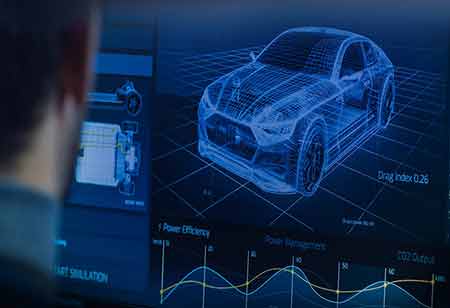THANK YOU FOR SUBSCRIBING
THANK YOU FOR SUBSCRIBING
Be first to read the latest tech news, Industry Leader's Insights, and CIO interviews of medium and large enterprises exclusively from Auto Tech Outlook

By
Auto Tech Outlook | Wednesday, August 17, 2022
Stay ahead of the industry with exclusive feature stories on the top companies, expert insights and the latest news delivered straight to your inbox. Subscribe today.
Several light-duty PHEVs are commercially available, and medium-duty vehicles are now entering the market.
FREMONT, CA: Plug-in hybrid electric vehicles (PHEVs) use batteries to power an electric motor and another fuel, such as gasoline or diesel, to power an internal combustion engine or other propulsion sources. PHEVs can charge their batteries through setting equipment and regenerative braking.
Using electricity from the grid to run the vehicle sometimes reduces operating costs and fuel use relative to conventional cars. PHEVs may also produce lower emissions levels, depending on the electricity source and how often the vehicle is operated in all-electric mode.
Several light-duty PHEVs are commercially available, and medium-duty vehicles are now entering the market. In addition, medium- and heavy-duty vehicles can also be transformed into PHEVs. Though PHEVs are generally more expensive than similar traditional and hybrid vehicles, some costs can be recovered through fuel savings, a federal tax credit, or state incentives.
Powered by Electric Motor and Combustion Engine
PHEVs include an internal combustion engine and an electric motor, which employ energy stored in batteries. PHEVs generally have greater battery packs than hybrid electric vehicles. This makes it likely to drive moderate distances using just electricity (about 15 to 60-plus miles in current models), commonly referred to as the "electric range" of the vehicle.
Most of a PHEV's power can derive from stored electricity during urban driving. For instance, a light-duty PHEV driver might drive to and from work on all-electric power, plug the vehicle in to charge at night, and be prepared for another all-electric commute the next day.
The internal combustion engine fuels the vehicle when the battery is mainly depleted, during quick acceleration, or when intensive heating or air conditioning loads are present.
Some heavy-duty PHEVs function the opposite way, with the internal combustion engine utilized for driving to and from a job site and electricity used to power the vehicle's auxiliary equipment or control the cab's climate while at the job site.
Fueling and Driving Options
PHEV batteries can be supercharged by an outside electric power source, internal combustion engine, or recuperative braking. While braking, the electric motor acts as a generator, utilizing the energy to charge the battery, thereby recapturing energy that would have been lost.
PHEV fuel intake depends on the distance driven between battery charges. For instance, if the vehicle is never plugged in to charge, fuel economy will be about the same as a similarly sized hybrid electric vehicle.
However, if the vehicle is driven a shorter distance than its all-electric range and plugged in to charge between trips, it may be possible to use only electric power. Thus, consistently charging the vehicle is the best way to maximize the electric benefits.
Fuel-Efficient System Design
Above battery storage and motor power, there are different ways to unite the power from the electric motor and the engine. The two major configurations are parallel and series. Some PHEVs employ transmissions that enable them to operate in either parallel or series configurations, switching between the two based on the drive profile.
• Parallel hybrid operation joins the engine and the electric motor to the wheels using mechanical coupling. Both the electric motor & the engine can push the wheels instantly.
• Series plug-in hybrids employ only the electric motor to drive the wheels. The internal combustion engine is employed to generate electricity for the motor. Vehicles of this type are commonly referred to as extended-range electric vehicles. The electric motor almost always drives the wheels, but the vehicle can switch to work like a parallel hybrid at highway speeds when the battery is depleted.
 Copyright © 2025 AutoTech Outlook. All Rights Reserved | Privacy Policy | Subscribe | Sitemap | About us | Feedback Policy | Editorial Policy
Copyright © 2025 AutoTech Outlook. All Rights Reserved | Privacy Policy | Subscribe | Sitemap | About us | Feedback Policy | Editorial Policy 
However, if you would like to share the information in this article, you may use the link below:
https://www.autotechoutlookapac.com/news/what-are-hybrid-electric-vehicles-nwid-1123.html




